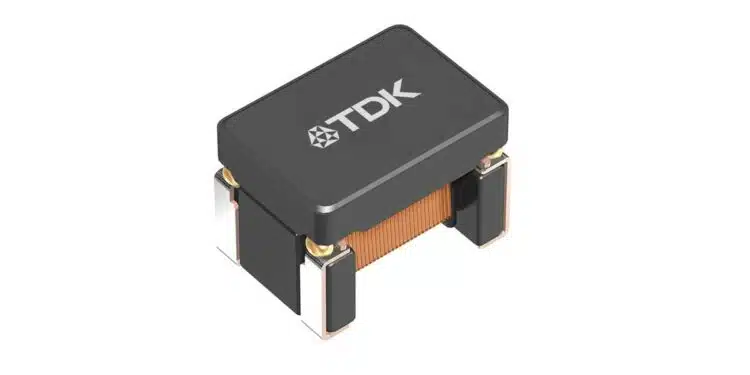TDK Corporation announces the expansion of the ADL4532VK series (4.5 x 3.2 x 3.2 mm; L x W x T) of high current wire winding inductors for automotive power-over-coax (PoC).
Mass production of these new components began in February 2025.
Advanced driver-assistance systems (ADAS) are designed to enhance vehicle safety by using automotive cameras and sensors that monitor the driving environment.
These systems rely on multiple cameras, typically installed at the front, rear, and sides of the vehicle, to capture real-time imagery for safe and secure driving. In standard configurations, automotive cameras require two separate lines for power and signal transmission: a power line connected to the vehicle’s battery and a signal line connected to the electronic control unit (ECU).
However, with PoC technology, a single coaxial cable can simultaneously carry both power and data, simplifying and reducing cabling. This can reduce the vehicle’s weight, which in turn can improve fuel efficiency and lower carbon emissions.
The PoC system requires a filter incorporating multiple inductors to effectively separate power from the data signal before processing. TDK’s new ADL4532VK series delivers high impedance across a broad frequency range from tens of megahertz (MHZ) to hundreds of megahertz by using proprietary materials and structural design innovations.
This reduces the number of inductors used, saving space. It is compatible with high currents of up to 1650 mA and meets the needs for high functionality, including not only the latest automotive cameras but also the infrared cameras and display. Additionally, the inductor ensures high reliability with an upper operation temperature limit of +155 °C thanks to product design assuming use in high-temperature environments.
Looking ahead, TDK is committed to developing inductors for automotive PoC applications by pursuing optimized design by refining multilayer, wire-winding, and thin-film technologies to address market needs. TDK will expand its lineup of products to improve the quality of PoC transmission signals.
Features
- Compatible with high currents of up to 1650 mA
- Suitable for high temperature environments; supports a wide operation range of -55 °C and +155 °C
- Ensures high impedance across a broad frequency range, helping to reduce the number of inductors used and save space
Applications
- PoC circuits for automotive































